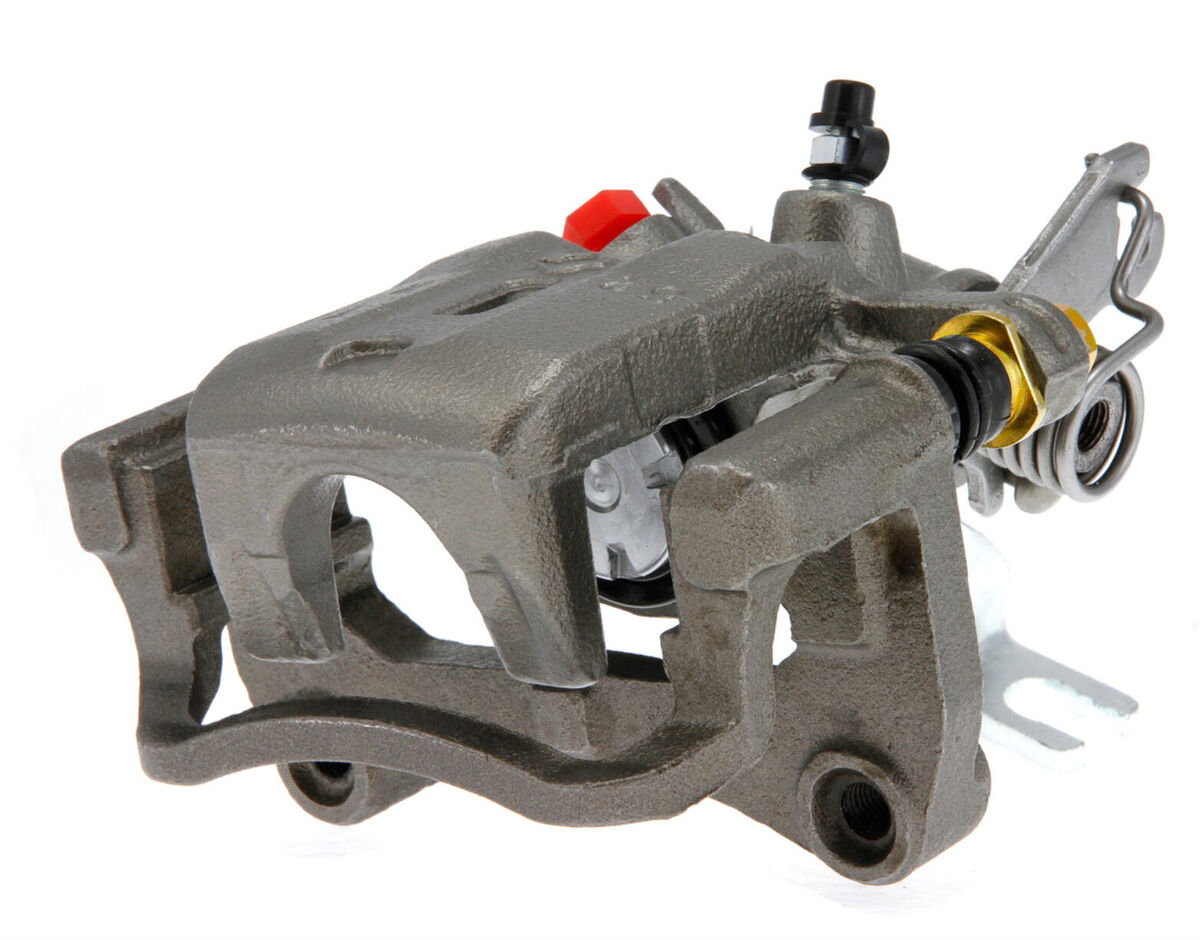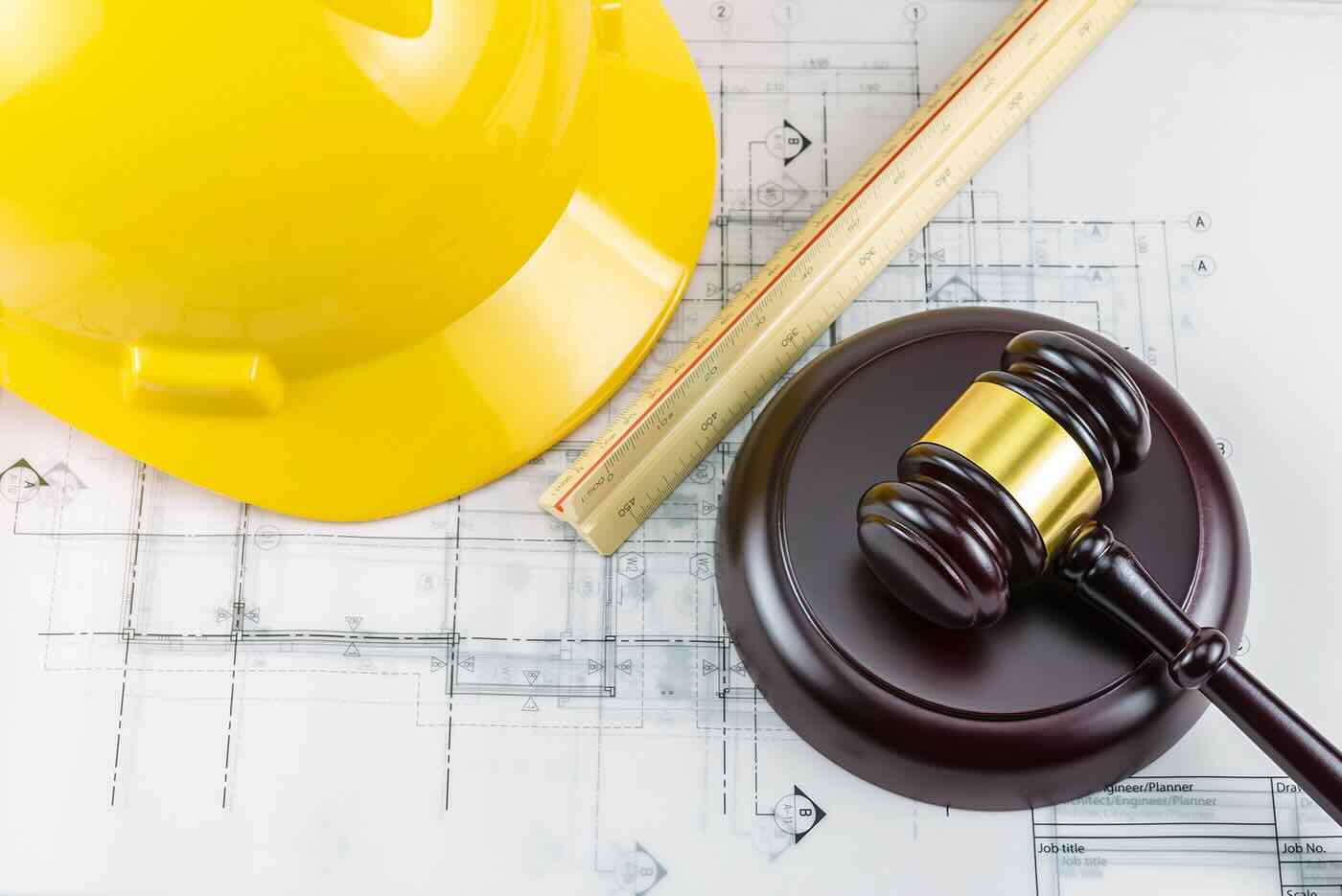Home>Home Maintenance>What Is Overhead Profit And Markup Charges On A Contractor’s Bid For Home Repairs


Home Maintenance
What Is Overhead Profit And Markup Charges On A Contractor’s Bid For Home Repairs
Modified: March 6, 2024
Learn about the overhead, profit, and markup charges that contractors include in their bids for home repairs to ensure transparency in home maintenance costs.
(Many of the links in this article redirect to a specific reviewed product. Your purchase of these products through affiliate links helps to generate commission for Storables.com, at no extra cost. Learn more)
Introduction
Welcome to the world of home repairs and renovations! Whether you’re a homeowner looking to spruce up your space or a contractor seeking to provide top-notch services, understanding overhead profit and markup charges is essential. In this article, we’ll delve into the intricacies of these concepts and shed light on how they impact the bidding process for home repairs.
When contractors submit bids for home repair projects, they take into account various costs, including materials, labor, and overhead expenses. Overhead refers to the indirect costs of running a contracting business, such as office rent, utilities, insurance, and equipment maintenance. Profit markup, on the other hand, is the additional amount added to the project cost to account for profit.
With a clear understanding of overhead costs and profit markup, contractors can ensure accurate bidding, which is crucial for a successful project. Both homeowners and contractors benefit from fair and transparent pricing, as it establishes trust and encourages long-term relationships.
So, let’s dive into the details of overhead profit and markup charges and explore how they shape the bidding process in the realm of home repairs.
Key Takeaways:
- Overhead costs and profit markup are crucial for home repair projects. Contractors must accurately calculate these expenses to ensure fair pricing and financial stability.
- Negotiating overhead and markup charges requires research, communication, and flexibility. Homeowners and contractors can collaborate for a mutually beneficial agreement.
Read more: What Is Overhead And Profit In Construction
Understanding Overhead Costs
When it comes to home repairs, overhead costs play a vital role in determining the overall pricing of a project. Overhead costs are the expenses incurred by a contracting business that are not directly tied to a specific project. These indirect costs are necessary for the smooth operation of the business and include items such as office rent, utilities, employee salaries, insurance, and equipment maintenance.
Accurately calculating overhead costs is essential for contractors as they need to cover these expenses in order to stay in business. Failing to include overhead costs in a bid can result in financial losses and an unsustainable business model.
Contractors generally calculate overhead costs as a percentage of their total operational expenses. This percentage varies from business to business based on factors such as the size of the company, location, and specific industry requirements. It’s important for contractors to regularly review and update their overhead cost calculations to reflect any changes in the business environment.
Understanding your overhead costs allows you to effectively allocate resources and determine the right pricing for your services. By accurately factoring in your overhead costs, your bids will cover the necessary expenses while still providing a fair and competitive rate for your clients.
By including overhead costs in your bids, you can ensure the stability and growth of your contracting business, while also establishing trust and transparency with your clients.
What Is Profit Markup?
Profit markup is an additional percentage or amount that contractors add to the project cost to cover their desired profit margin. Essentially, it is the profit calculated on top of the direct costs of materials, labor, and overhead expenses.
Setting the right profit markup is crucial for the financial success of a contracting business. However, determining the appropriate markup can be challenging as it needs to account for factors such as the level of competition in the market, the complexity of the project, and the overall risk involved.
Contractors need to strike a balance between earning a reasonable profit and remaining competitive in the industry. Markup that is too high may deter potential clients, while a low markup may undermine the financial sustainability of the business.
While markup percentages vary depending on factors such as industry standards and business goals, a common practice is to determine the desired profit margin and then calculate the corresponding markup. For example, if a contractor wishes to achieve a 20% profit margin on a project, they would calculate the markup by dividing the desired profit by the total project cost, and then multiplying it by 100.
It’s important to note that profit markup is not the same as profit margin. Profit markup is the percentage added to the project cost, while profit margin is the percentage of the profit in relation to the total cost. Understanding the difference between markup and margin is crucial for accurate bidding and financial planning.
By carefully considering the appropriate profit markup, contractors can ensure the financial viability of their projects and achieve their desired profitability.
The Importance of Accurate Bidding
Accurate bidding is crucial in the world of home repairs as it sets the foundation for a successful project and a satisfied client-contractor relationship. Whether you’re a homeowner seeking quality work or a contractor aiming to deliver excellent services, accurate bidding ensures that both parties are on the same page when it comes to project expectations and pricing.
One of the primary reasons for accurate bidding is to avoid cost overruns. If a contractor underestimates the costs involved in a project, they may end up in a situation where the expenses exceed the initial budget. This not only puts a strain on the contractor’s finances but also leads to frustration for the homeowner who may feel deceived or taken advantage of.
On the other hand, overpricing a project can lead to losing potential clients. Homeowners are often diligent in obtaining multiple bids for their projects, and if a contractor’s price is significantly higher than others, they may opt for a more cost-effective option. Therefore, accurate bidding allows contractors to stay competitive in the market and increase their chances of winning projects.
Furthermore, accurate bidding fosters trust and transparency between the contractor and homeowner. When a contractor presents a comprehensive and detailed bid, it demonstrates their professionalism and knowledge. Homeowners appreciate this level of transparency, as it gives them confidence in the contractor’s ability to manage the project efficiently and deliver high-quality results.
Accurate bidding also helps contractors maintain a healthy profit margin. By accurately estimating the project costs, including materials, labor, overhead, and profit markup, contractors can ensure their profitability while providing fair pricing to homeowners.
Overall, accurate bidding is essential for a successful home repair project. It minimizes financial risks, establishes trust and transparency, allows contractors to remain competitive, and ensures a mutually beneficial outcome for both homeowners and contractors.
Determining Overhead Expenses
Accurately determining overhead expenses is essential for contractors as it allows them to calculate the true cost of running their business and incorporate these costs into their project bids. By understanding and calculating overhead expenses, contractors can ensure that they are covering all necessary costs while maintaining profitability.
The first step in determining overhead expenses is to identify and categorize all the indirect costs associated with running a contracting business. This includes expenses such as office rent, utilities, insurance, licenses, permits, taxes, advertising, employee salaries, training, and equipment maintenance.
Next, contractors should carefully track and document these expenses over a specific period of time, typically a year. This data provides a comprehensive overview of the actual costs incurred and aids in accurate calculation of overhead expenses.
Once the expenses are compiled, contractors can allocate them to specific projects based on factors such as the amount of time spent on each project or the percentage of resources used. This ensures that each project includes its fair share of overhead expenses.
It’s important to review and update overhead expenses regularly to account for any changes in the business environment. For example, if the cost of office rent increases, it should be reflected in the overhead calculations to ensure accurate bidding.
In addition to direct overhead costs, contractors should also consider allocating a portion of general and administrative expenses (G&A) to each project. G&A expenses include expenses such as office supplies, software, and management salaries. By allocating a portion of these costs, contractors can have a more accurate representation of the overall indirect expenses of a project.
Overall, determining overhead expenses requires careful tracking, categorization, and allocation of all indirect costs associated with running a contracting business. By accurately calculating and incorporating these expenses into their project bids, contractors can ensure fair pricing and maintain financial stability.
When reviewing a contractor’s bid for home repairs, make sure to understand the difference between overhead, profit, and markup charges. Overhead covers the cost of doing business, profit is the amount the contractor wants to make, and markup is the percentage added to cover overhead and profit. Understanding these terms will help you evaluate the bid more effectively.
Read more: What Is The Markup On Home Decor
Calculating Profit Margin
Calculating profit margin is a crucial step for contractors when determining the financial viability of a project and setting the appropriate markup. Profit margin is the percentage of profit earned in relation to the total cost of a project. By understanding profit margin, contractors can effectively evaluate the profitability of their services and make informed business decisions.
To calculate profit margin, contractors need to determine the total revenue generated from a project and subtract the associated costs, including direct materials, labor, overhead expenses, and indirect general and administrative expenses (G&A). The remaining amount is the profit.
Once the profit is determined, it is divided by the total cost of the project and multiplied by 100 to obtain the profit margin percentage. For example, if a project costs $10,000 and yields a profit of $2,000, the profit margin would be calculated as follows:
(Profit / Total Cost) x 100
($2,000 / $10,000) x 100 = 20%
The profit margin percentage indicates how much profit is earned for every dollar spent on the project. In the example above, the project has a profit margin of 20%, meaning that for every $1 spent on the project, the contractor earns a profit of $0.20.
It’s important to note that profit margin can vary depending on factors such as industry standards, competition, and the level of risk involved in the project. Contractors should aim to set a profit margin that allows them to cover their expenses, compensate for their expertise and services, and achieve a reasonable return on their investment.
While profit is a vital component of a contracting business, it’s essential to strike a balance between profitability and competitiveness. Setting an excessively high profit margin may deter potential clients, while a low profit margin may not provide an adequate return on investment. Contractors should consider market conditions, project complexity, and their own business goals when determining the appropriate profit margin.
By accurately calculating profit margin, contractors can ensure the financial success of their projects while maintaining competitiveness in the market.
Factors Affecting Overhead and Profit Markup
Several factors come into play when determining overhead and profit markup in the contracting industry. These factors not only impact the financial aspects of a project but also affect the competitiveness and sustainability of a contracting business. Let’s explore some of the key factors that influence overhead and profit markup:
- Industry and Market Conditions: The nature of the industry and prevailing market conditions have a significant impact on overhead and profit markup. Highly competitive industries may require contractors to have lower profit margins to remain competitive. Additionally, market demand, supply of skilled labor, material costs, and economic conditions influence overhead expenses.
- Project Complexity and Risk: The complexity and risk associated with a project can influence both overhead and profit markup. Projects that require specialized skills, additional permits, or extensive safety measures may incur higher overhead costs. Similarly, projects that involve greater risk, such as working at heights or handling hazardous materials, may require contractors to charge a higher profit margin.
- Business Size and Overhead Structure: The size of a contracting business plays a role in determining overhead and profit markup. Larger businesses typically have higher overhead expenses due to the need for more staff, equipment, and managerial resources. The structure and efficiency of a business’s overhead operations can also impact costs, making it crucial for contractors to regularly evaluate and optimize their overhead structure.
- Location and Regional Factors: The geographic location of a project can influence overhead and profit markup. Factors such as local labor costs, material availability, and regulatory requirements can vary from one region to another. Contractors operating in high-cost regions may need to adjust their overhead and profit markup accordingly to account for these regional variations.
- Experience and Expertise: The level of experience and expertise that a contractor brings to a project can influence both overhead and profit markup. Contractors with a proven track record and specialized skills may be justified in commanding higher profit margins due to the added value they provide. However, less experienced contractors may need to adjust their profit markup to remain competitive and build a client base.
It’s essential for contractors to carefully consider these factors when determining their overhead expenses and profit markup. By understanding the unique dynamics of each project and the broader industry landscape, contractors can set fair and competitive prices while ensuring the financial sustainability of their business.
Tips for Negotiating Overhead and Markup Charges
When it comes to negotiating overhead and markup charges with contractors, homeowners can follow a few key tips to ensure a fair and mutually beneficial agreement. Here are some helpful tips for negotiating these charges:
- Do Your Research: Before entering into negotiations, it’s important for homeowners to research industry standards and average overhead and markup charges. This will provide a benchmark for understanding what is reasonable and help in making informed decisions during negotiations.
- Consider the Complexity of the Project: The complexity of a home repair project can influence both overhead and markup charges. If a project requires specialized skills, additional permits, or extensive safety measures, it may justify higher overhead and profit markup. Consider the unique aspects of the project and be open to discussing the cost implications with the contractor.
- Ask for Detailed Cost Breakdowns: Requesting a detailed breakdown of costs can provide transparency and help identify any excessive charges. Ask the contractor to itemize the costs for materials, labor, overhead, and profit markup. This breakdown will allow you to understand how the charges are allocated and evaluate their reasonability.
- Request Multiple Bids: Obtaining multiple bids from different contractors can provide valuable insights and negotiation leverage. By comparing bids, you can identify any significant discrepancies in overhead and markup charges. This will enable you to have more informed discussions and potentially negotiate better terms.
- Communicate Your Budget and Expectations: Clearly communicate your budget constraints and project expectations to the contractor. By openly discussing your financial limitations, you can work together to find a solution that meets both parties’ needs. This communication can lead to a more collaborative and satisfactory negotiation process.
- Focus on Value and Quality: While it’s important to consider pricing, don’t solely base your decision on the lowest bid. Pay attention to the value and quality that the contractor brings to the table. A higher-priced contractor may provide better craftsmanship, use superior materials, or offer additional services that justify the higher charges. Take these factors into account when negotiating overhead and markup charges.
- Be Flexible: Negotiations require give and take from both parties. Be open to compromise and consider alternative solutions. Contractors may be willing to adjust their overhead and markup charges if you are flexible with project timelines or offer other incentives. As long as the negotiation is fair and reasonable for both sides, flexibility can lead to a successful outcome.
Remember, negotiations should aim for a win-win situation where both homeowners and contractors feel satisfied. By following these tips and maintaining open and honest communication, homeowners can negotiate fair overhead and markup charges that align with their budget and project requirements.
Conclusion
Understanding and navigating the world of overhead profit and markup charges is essential for both homeowners and contractors in the realm of home repairs. Accurate bidding, fair pricing, and transparent negotiations are vital for a successful project outcome and a strong client-contractor relationship.
Overhead costs, which encompass the indirect expenses of running a contracting business, need to be carefully calculated and incorporated into project bids. By accurately determining overhead expenses, contractors can ensure the stability and financial viability of their business while providing fair pricing to homeowners.
Profit markup, the additional percentage or amount added to cover desired profit margins, should be set thoughtfully and in line with industry standards and market competitiveness. Finding the right balance between profitability and staying competitive is crucial for contractors.
Accurate bidding is of utmost importance to avoid cost overruns and maintain trust with homeowners. Accurate estimation of project costs, including overhead expenses and profit markup, allows contractors to avoid financial losses and provide fair pricing to homeowners.
Factors such as industry conditions, project complexity, business size, location, and expertise can influence overhead and profit markup. Contractors need to carefully consider these factors when determining pricing to ensure a fair and sustainable business model.
When negotiating overhead and markup charges, homeowners should do their research, consider project complexity, and request detailed cost breakdowns. Requesting multiple bids, communicating budget and expectations, and focusing on value and quality are also essential in negotiations. Flexibility and collaboration during negotiations can lead to a mutually beneficial agreement.
In conclusion, a strong understanding of overhead profit and markup charges is vital for both homeowners and contractors in the realm of home repairs. Accurate bidding, fair pricing, and transparent negotiations set the foundation for successful projects and foster trust and satisfaction between homeowners and contractors. By following the tips outlined in this article, both parties can navigate the negotiation process effectively and achieve their goals in the home repair journey.
Frequently Asked Questions about What Is Overhead Profit And Markup Charges On A Contractor's Bid For Home Repairs
Was this page helpful?
At Storables.com, we guarantee accurate and reliable information. Our content, validated by Expert Board Contributors, is crafted following stringent Editorial Policies. We're committed to providing you with well-researched, expert-backed insights for all your informational needs.















0 thoughts on “What Is Overhead Profit And Markup Charges On A Contractor’s Bid For Home Repairs”